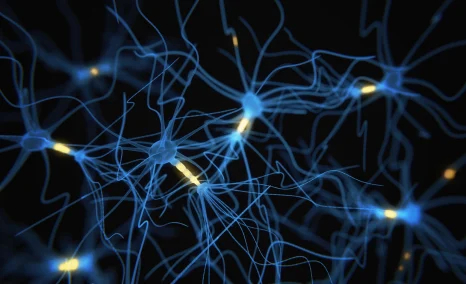
The Future of HIV Associated Neurocognitive Disorders Treatment: A Growing Crisis with Limited Solutions

Jan 08, 2020
Cannabis sativa or Cannabis indica is commonly known as Medical marijuana or cannabis (cannabinoids) are prescribed by physicians to their patients, to treat diseases, conditions or to relieve pain or symptoms. As per the National Institute of Health, Marijuana or cannabis is used for the treatment of ailments for at least 3,000 years. But the therapeutic use of marijuana in western medicine started after the 19th century.
The cannabis plant contains about 60 chemical substances called cannabinoids. Tetrahydrocannabinolis (THC), cannabidiol (CBD), and Nabiximols (CBN) are the active marijuana compounds widely used for medical purposes.
THC or delta-9-tetrahydrocannabinol is the main component responsible for marijuana’s mind-altering effect. THC is also helpful in treating nausea and vomiting.
Click Here To Get the Article in PDF
Nabiximols (CBN) is used for neuropathic pain, overactive bladder, and symptoms of multiple sclerosis. Cannabidiol (CBD) is mainly used for relief for anxiety, joint pain, depression and post-traumatic stress disorder.
Medical marijuana is commonly used for pain control. Apart from pain relief medical marijuana is used to treat a number of different conditions like glaucoma, HIV/aids symptoms, multiple sclerosis, muscle spasms, and Dravet syndrome. Medical marijuana is also helpful in treating nausea and vomiting associated with cancer chemotherapy, certain forms of epilepsy and Lennox-Gastaut syndrome.
The laws regarding the use of marijuana vary by country. The rules and regulations regarding possession, distribution and cultivation are regulated by the United Nations Single Convention on Narcotic Drugs.
The use of marijuana is not recognized & monitored by the Food and Drug Administration (FDA) in the USA. Today marijuana use is unlawful at the federal level in the USA, but more than 30 U.S. State have legalised the use of marijuana for medical, recreational and industrial purpose use.
Various studies have also found many negative associations between marijuana use and health. Hallucinations, panic, increased risk of stroke, short-term memory problems are some of the negative impacts of marijuana intake.
In the long-term marijuana affects overall brain development, learning functions and decline in the verbal ability of an individual. Marijuana smoke contains carcinogenic hydrocarbons that can cause lung cancer.
Article in PDF


Jan 08, 2020
Cannabis sativa or Cannabis indica is commonly known as Medical marijuana or cannabis (cannabinoids) are prescribed by physicians to their patients, to treat diseases, conditions or to relieve pain or symptoms. As per the National Institute of Health, Marijuana or cannabis is used for the treatment of ailments for at least 3,000 years. But the therapeutic use of marijuana in western medicine started after the 19th century.
The cannabis plant contains about 60 chemical substances called cannabinoids. Tetrahydrocannabinolis (THC), cannabidiol (CBD), and Nabiximols (CBN) are the active marijuana compounds widely used for medical purposes.
THC or delta-9-tetrahydrocannabinol is the main component responsible for marijuana’s mind-altering effect. THC is also helpful in treating nausea and vomiting.
Nabiximols (CBN) is used for neuropathic pain, overactive bladder, and symptoms of multiple sclerosis. Cannabidiol (CBD) is mainly used for relief for anxiety, joint pain, depression and post-traumatic stress disorder.
Medical marijuana is commonly used for pain control. Apart from pain relief medical marijuana is used to treat a number of different conditions like glaucoma, HIV/aids symptoms, multiple sclerosis, muscle spasms, and Dravet syndrome. Medical marijuana is also helpful in treating nausea and vomiting associated with cancer chemotherapy, certain forms of epilepsy and Lennox-Gastaut syndrome.
The laws regarding the use of marijuana vary by country. The rules and regulations regarding possession, distribution and cultivation are regulated by the United Nations Single Convention on Narcotic Drugs.
The use of marijuana is not recognized & monitored by the Food and Drug Administration (FDA) in the USA. Today marijuana use is unlawful at the federal level in the USA, but more than 30 U.S. State have legalised the use of marijuana for medical, recreational and industrial purpose use.
Various studies have also found many negative associations between marijuana use and health. Hallucinations, panic, increased risk of stroke, short-term memory problems are some of the negative impacts of marijuana intake.
In the long-term marijuana affects overall brain development, learning functions and decline in the verbal ability of an individual. Marijuana smoke contains carcinogenic hydrocarbons that can cause lung cancer.
